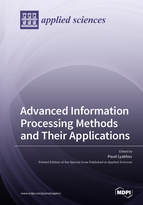Advanced Information Processing Methods and Their Applications
A special issue of Applied Sciences (ISSN 2076-3417). This special issue belongs to the section "Computing and Artificial Intelligence".
Deadline for manuscript submissions: closed (25 March 2022) | Viewed by 14214
Special Issue Editor
Interests: high performance computing; residue number system arithmetic; digital signal processing; digital image processing; machine learning; artificial intelligence; medical imaging; custom hardware development
Special Issues, Collections and Topics in MDPI journals
Special Issue Information
Dear Colleagues,
The rapid development of information technology opens up new opportunities for quality improvement in many areas of human activity. Modernity is characterized by a significant increase in the volume of extracted and processed information, which leads to the problem of developing new approaches to organizing computations, including neurocomputing and quantum computing. Digital circuits are also under active development, especially in improving performance and reducing power consumption for use in mobile and embedded devices. New problem-oriented solutions based on FPGA and ASIC are constantly being developed for a variety of applications. New digital signal, image, and video processing devices must meet the growing practical needs for high speed and quality of work. The widespread use of machine learning methods and new methods for big data processing will help humans in many areas. One of the most promising areas for the application of modern IT technologies is biomedical data processing. An interesting issue in modern science is the development of new brain–computer interfaces. Medicine is another major application of computer science. Another important application of computer science is medicine, especially in the context of the development of new tools for the diagnosis and support of patients with COVID.
The latest technological developments in the areas listed above will be shared through this Special Issue. We invite researchers and investigators to contribute their original research or review articles to this Special Issue.
Prof. Dr. Pavel LyakhovGuest Editor
Manuscript Submission Information
Manuscripts should be submitted online at www.mdpi.com by registering and logging in to this website. Once you are registered, click here to go to the submission form. Manuscripts can be submitted until the deadline. All submissions that pass pre-check are peer-reviewed. Accepted papers will be published continuously in the journal (as soon as accepted) and will be listed together on the special issue website. Research articles, review articles as well as short communications are invited. For planned papers, a title and short abstract (about 100 words) can be sent to the Editorial Office for announcement on this website.
Submitted manuscripts should not have been published previously, nor be under consideration for publication elsewhere (except conference proceedings papers). All manuscripts are thoroughly refereed through a single-blind peer-review process. A guide for authors and other relevant information for submission of manuscripts is available on the Instructions for Authors page. Applied Sciences is an international peer-reviewed open access semimonthly journal published by MDPI.
Please visit the Instructions for Authors page before submitting a manuscript. The Article Processing Charge (APC) for publication in this open access journal is 2400 CHF (Swiss Francs). Submitted papers should be well formatted and use good English. Authors may use MDPI's English editing service prior to publication or during author revisions.
Keywords
- Neurocomputing
- Quantum computing
- Digital circuits
- Digital signal processing
- Machine learning
- Deep neural networks
- Big data
- Biomedical data processing
- Brain–computer interfaces
- Medical imaging






